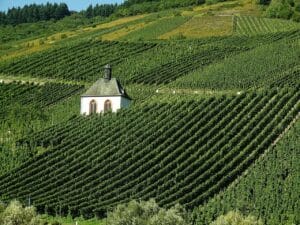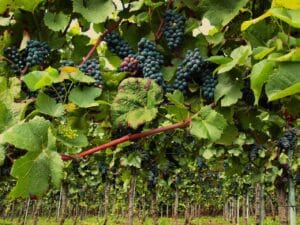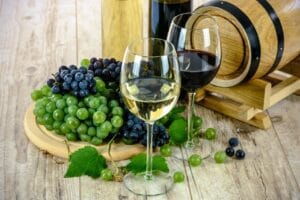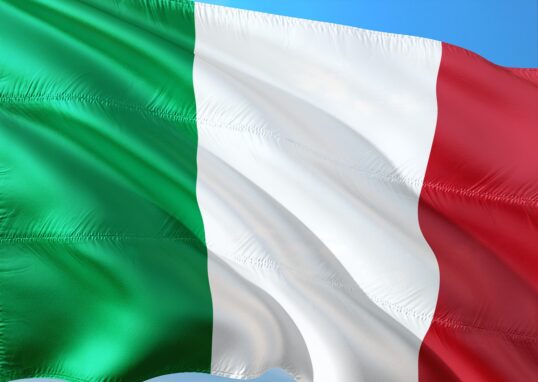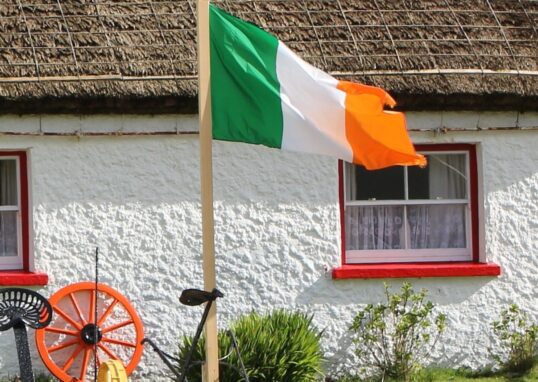
🍇 The Alto Douro Wine Region: A Journey Through Time, Wine, and Beauty
Alto Douro Wine Region is Portugal’s prettiest destination. It is famous for its vineyards, river scenery, and Port wine. People have been growing grapes here for more than 2,000 years. They made wine with love, love, and tradition. Nature and human effort are closely linked here in the valley. The region was made a UNESCO World Heritage Site in the year 2001. This was a result of its extensive history, cultural importance, and unique landscape. Travelers from the entire world visit to sample wine, immerse in nature, and discover history. The Alto Douro is not only about wine. It is also about people, culture, food, and festivities. Every vineyard has a history. Every glass of wine holds the taste of history. The hills, the terraces, and the Douro River create the landscape to be like a painting. There, we will outline the history, geography, wine tradition, vineyards, tourism activities, and surrounding areas of the Alto Douro. We will also notice hotels, travel recommendations, and attractions surrounding the valley. This will give you a full picture of why this area is so special.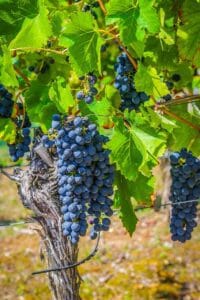
History of the Alto Douro Wine Region
The history of this valley is old and legendary. Wine has been a part of the life here for thousands of years.
- Roman Times: The Romans planted the first grape vines in the Douro Valley. They made wine and transported it downstream.
- Medieval Period: Monks tended vineyards. They introduced farming methods. They also made wine for trade and worship.
- 17th Century: Port wine was known to the world. It was very much in fashion in England. There was more trade, and the Douro Valley was a center for wine.
- 1756: The Douro was the world’s first demarcated wine region. That is, laws governing wine were created to control quality and protect the region.
- Modern Times: Today, the valley is famous for table wines and Port. New technology is used, yet tradition is never abandoned.
The Alto Douro is more than wine. It is about survival, family, and struggle. Farmers worked for centuries, building stone terraces on the sides of hills so that grapes could be grown. Their work reshaped the landscape and created the landform we see today.
Geography and Landscape
Alto Douro is located in northern Portugal. The Douro River flows in from Spain and traverses the valley. The river gives life to the region. The landscape is distinctive because of the terraced vineyards. Farmers cut the steep mountains into steps called socalcos. The terraces give room for vines to be cultivated even on the steep slopes. The soil is made of schist rock, which holds heat and feeds the vines. It is hot and dry in summer, and cold in winter. This makes the grapes strong and sweet. The seasons give different hues to the valley:In spring, the vines are green and lush.
- In summer, the valley is yellow and dry. In autumn, leaves turn red and orange during harvest time. In winter, the valley remains dormant, and fog typically covers the river.
The mix of river, earth, and climate is perfect for wine.
Vineyards and Wineries
The Douro Valley has quintas, which are wine estates. Some are small family-owned estates. Some are large-scale operations well-known anywhere.
- Quinta do Bomfim: Well-known for its Port wine. Tourists may visit vineyards and cellars.
- Quinta do Noval: Well-known for its unique Port. It boasts a rich history.
- Quinta das Carvalhas: Offers panoramic views of the valley. Tours include wine tasting.
- Quinta da Roêda: Quaint estate employing old-fashioned methods of winemaking.
The wineries are a blend of old and new. Some of them still employ ancient stone vats where grapes are trampled on by hand. Others employ modern machinery but still follow ancient ways.
Port Wine – The Heart of the Region
The most well-known product of Douro is Port wine. It is a sweet, fortified wine. What this essentially entails is that brandy is added to avoid fermentation. This helps maintain the natural sugar present in the wine and fortifies it. Varieties of Port wine:
- Ruby Port: Young, fruity, red.
- Tawny Port: Barreled, golden-brown colored, nutty flavored.
- Vintage Port: Made from the finest vintages, rich, aged for decades.
- White Port: Made from white grapes, lighter and crisp.
Port became fashionable in England in the 17th century. English traders built wine cellars at Vila Nova de Gaia, near Porto. They exported wine from there all around the world.
Local Culture and Traditions
Wine forms part of the region’s culture. Harvest time, vindima, is a festival period. Families, friends, and guests help together in the grape-picking. A few of the quintas crush grapes by hand, to the sound of traditional songs. Festivals are also regular. Wine festivals, music, and dances occur in towns like Peso da Régua and Pinhão. Food is also a treasure. Roasted lamb, codfish, and cheese are traditional dishes that pair well with wine. The Douro culture is warm and welcoming. People adore their country and wine.
Architecture and Heritage
The valley is not just about vineyards. It is also home to old houses and villages.
- Baroque churches of Lamego. Stone farmhouses in vineyards. Azulejo tiles, blue-painted tiles, found in railway stations, as in Pinhão. Wine cellars in Vila Nova de Gaia.
These monuments show the connection between wine and culture.
Flora and Fauna
Alto Douro is rich in flora and fauna. Vineyards are bordered by olive, almond, and chestnut trees. Wildflowers blanket the hillsides in spring. Bird species such as eagles, herons, and owls inhabit the area. The river contains fish species such as barbel and trout. There is cultivated land and wild scenery that dominates the valley.
🍇 The Wine-Making Process in the Alto Douro
Wine here in the Alto Douro is not simply a drink. It is a story of land, of tradition, and of people. It takes 2,000 years to make wine here. While technology has developed further, many estates still follow traditional methods. Some preserve even the ancient method of treading grapes. To study the Douro, we have to go through every stage of wine-making. From grape-growing to aged bottles, every step is important.
Growing the Grapes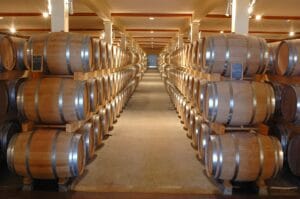
Viticulture is where wine-making begins. That is the science and art of growing grapes. Grapes in Alto Douro are grown on hillside terraces called socalcos. They are built with stone walls to prevent soil erosion. The soil is made up of schist rock, which has good heat and moisture retention. This allows grapes to mature gradually. Climate is also unique. It has dry and hot summers and cold winters. There is not much rain, and thus vines create deep roots to access water. This stress makes grapes tougher and more flavorful.
Several types of grapes are grown:
- Touriga Nacional – strong, perfumed, and dark.
- Tinta Roriz (Tempranillo) – well-balanced, fruity.
- Touriga Franca – flowered, elegant.
- Tinta Barroca – fragrant and rich.
- Tinto Cão – adds acidity and freshness.
For white Port and table wine, the Malvasia Fina and Rabigato grapes are used. The blend of grapes is chosen for each vineyard. This blend gives Douro wines their character.
Harvesting (Vindima)
The vindima refers to the harvest period. It usually occurs in September or October. The durations are dictated by weather and ripeness of grapes. They pick by hand. They cut bunches of grapes using small knives or scissors. They place them in baskets, and these are transported to the winery. It is a festive time. Neighbors, relatives, and even foreigners join. There are music, food, and laughter. In some quintas, people sing when they pick grapes. Harvest must be quick. Grapes are fermented soon after picking. To maintain quality, they are transported to wineries on the same day.
Crushing and Fermentation
Once grapes arrive at the winery, the next process is crushing. Traditionally, this was foot-crushed in stone vats called lagares. Grapes are trodden by staff in synchrony, possibly to music. This gentle process crushes skins without seeds being broken. It yields good color and flavor. Nowadays, the majority of wineries use newest crushers and steel tanks. Part of them still use the traditional way for Port wine. After crushing, juice and skins start to ferment. Natural yeasts convert sugar into alcohol. For table wines, fermentation lasts days to weeks. Temperature and time are strictly controlled. For Port wine, an early stop is made to fermentation. Winemakers add a clear grape spirit called aguardente (brandy) when the juice is half-fermented. This stops the yeast, and the outcome is natural sugar in the wine. This is why Port is strong and sweet.
Pressing the Grapes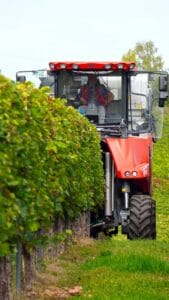
Once the fermentation is complete, the liquid is pressed away from the solid parts (skins, seeds, stems). This is done by pressing. Free-run juice is typically of the best quality. Pressed juice is richer and more heavy-bodied. Winemakers decide how much of both to use. Residual skins, or pomace, sometimes are distilled into brandy or used as fertilizer.
Aging the Wine
When juice becomes wine, it must be aged. This develops depth of flavor, aroma, and complexity. There are two main styles of aging
- In barrels: Wine is aged in wood casks, usually oak. Oxygen slowly enters, softening the wine. Port wines aged in barrels turn golden and nutty (Tawny Port).
- In bottles or tanks: Wine is aged with little oxygen. This helps retain fruit flavors intense. Ruby Port and most table wines are aged like this.
The length of aging can vary:
- Young wines aged 1–3 years. Reserva wines for 5–10 years. Vintage Ports age for decades.
The choice depends on the quality of grapes, market demand, and style.
Blending
Blending is an art at the Douro. Winemakers mix wines from different grapes, vineyards, or years. This creates balance and complexity. For Port wine, blending is necessary. A Tawny Port may have wines aged several years in combination. A Ruby Port may be from different vineyards. Vintage Ports, on the other hand, have grapes from a single excellent year only. Blending is where tradition and talent unite. Secret family recipes have been handed down to generations.
Bottling
When the wine is ready, it is filtered and bottled. Bottling must be accurate and sanitary. Oxygen must be controlled to avoid spoilage of the wine. Some bottles quickly sell out. Others are put away in cellars to age for years. Labels specify type, vineyard, and year. In Porto and Vila Nova de Gaia, huge cellars contain thousands of barrels and bottles. Visitors are able to walk among them and catch the scent of wood and wine.
Quality Control
The Douro is the oldest demarcated wine region in the world. That means there are strict controls. All wine is analyzed by Instituto dos Vinhos do Douro e Porto (IVDP). They analyze color, flavor, alcohol, and sugar. Only the ones that are approved can be labeled Douro or Port. This keeps tradition alive and protects consumers by providing quality.
From the Valley to the World
The wine is now exported from the valley. Wine barrels used to be carried by rabelo boats on the Douro River to Porto for centuries. Ships shipped them all over the world. Trains and trucks transport it today. The river custom is remembered, nonetheless, in festivals. The Douro wines circulate around the world. They are found on the tables of gourmet restaurants, family meals, and celebrations. Every glass carries the tale of the valley.
Why the Process is Special
The process of wine making at Alto Douro is special because:
- Grapes mature on precisely built hand-built terraces. Harvesting is typically conducted by hand. Ancient traditions like foot-crushing remain.
- Port wine utilizes a unique custom of brandy addition. Blending and aging give rise to an unlimited number of styles.
It is a combination of hard work, science, and art. Without the people, there is no valley. Without the valley, there is no Port wine.
Surrounding Attractions (Detailed)
Alto Douro is encircled by towns, cities, and villages that are worth visiting.
- Porto: Main city near the Douro. Famous for bridges, historic center, and wine cellars.
- Vila Nova de Gaia: Located opposite the river from Porto. Home to Port wine cellars.
- Lamego: Historic town with churches, museums, and gastronomic heritage.
- Peso da Régua: “Capital of the Douro”. Main wine tourism hub.
- Pinhão: Little but idyllic village. Train station features tile panels representing wine traditions.
- Miranda do Douro: On the Spanish border. Renowned for folk tradition and unique language.
Each of these gives visitors more than a wine taste. They offer culture, heritage, and art.
Hotels and Guesthouses
Visitors can stay in luxury hotels, wine estate houses, or small guesthouses.
- Six Senses Douro Valley: Luxury hotel with spa, wine tastings, and river views.
- The Vintage House Hotel (Pinhão): Chic accommodation in vineyard landscapes.
- Quinta Nova Luxury Winery House: Stay within a vineyard estate.
- Casa do Visconde de Chanceleiros: Cozy family-run guesthouse.
- Budget: Hostels and small inns in Peso da Régua and Lamego.
Staying in a vineyard hotel gives an even more authentic experience.
Global Importance
The Alto Douro is not only important to Portugal. It changed the world of wine. Port wine represented European commerce. Nowadays, Douro wines receive international awards. UNESCO protects the region because it is a unique example of nature and man co-operating for centuries.
Conclusion
The Alto Douro Wine Region is where nature, culture, and history coincide. It is not just about wine consumption. It is experiencing the essence of Portugal. From the old terraces to contemporary wineries, from cruises on the river to harvest celebrations, Douro has something for all travelers. The towns, villages, and hotels that surround it make the journey more vibrant. Standing at the Douro River with vineyards surrounding you, you feel the power of tradition and time. You understand why You understand why the world loves this valley. The Alto Douro is not just a travel destination. It is a story, a memory, and a taste of life.

